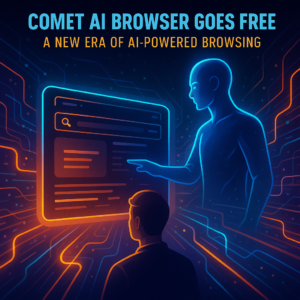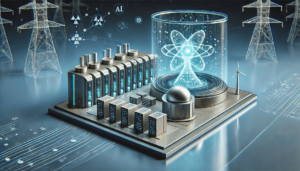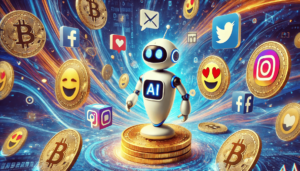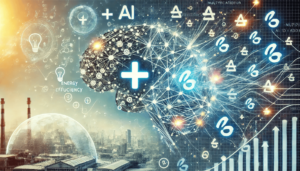Redefining Work: The Unstoppable Rise of AI in Global Labor Markets
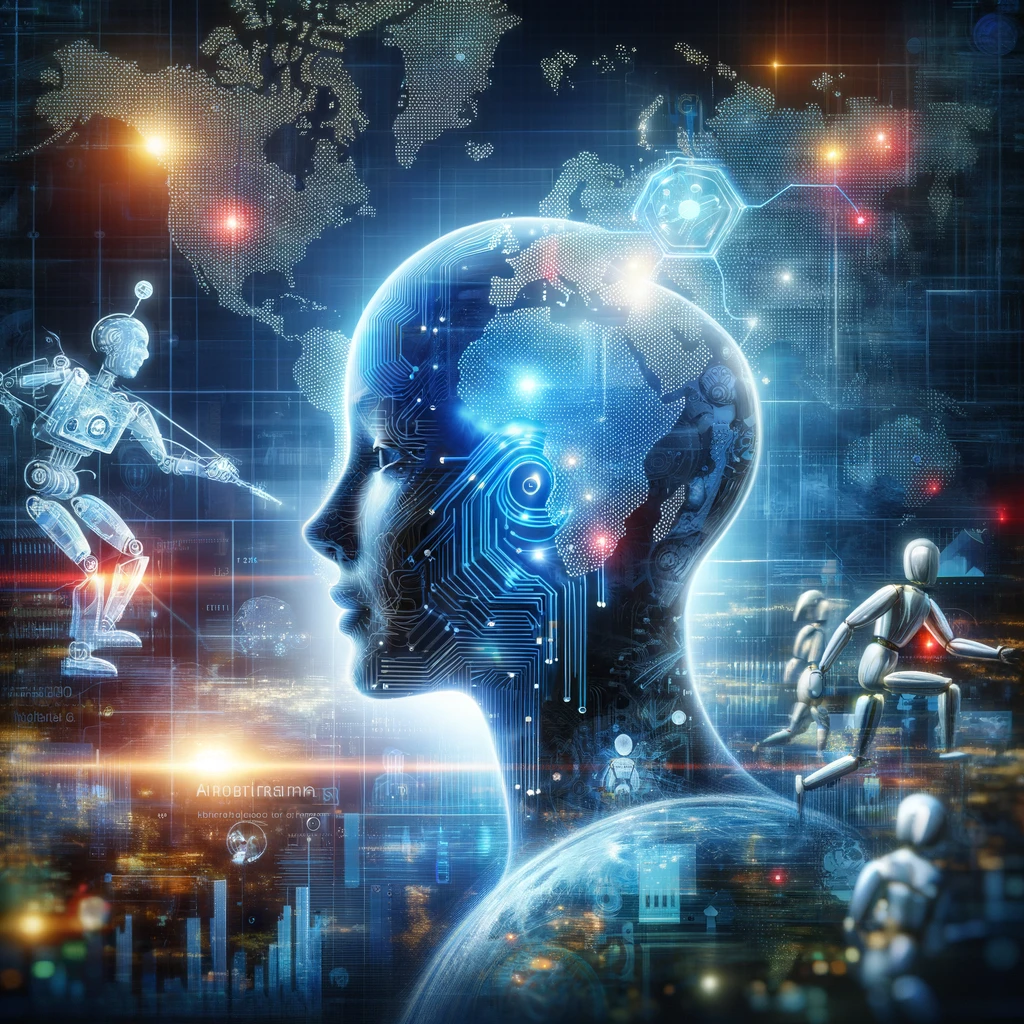
Exploring the Intersection of AI and the Workforce - The Future Is Here
- How is Artificial Intelligence (AI) transforming the global labor market?
- What are the potential benefits and challenges of AI integration in the workforce?
- How does the impact of AI on jobs differ between advanced economies and emerging markets?
- What strategies and policies are being implemented globally to adapt to the AI-driven changes in the workforce?
- How can we ensure that the benefits of AI in the labor market are equitably
In an era where technology continually redefines the possible, artificial intelligence (AI) emerges as a pivotal force reshaping global labor markets. This digital metamorphosis, driven by AI, is not a mere futuristic concept but a present reality with profound implications for how we work and live.
AI is heralded for its potential to boost productivity and elevate incomes significantly. By automating routine tasks, AI technologies offer a promise of liberating human workers to engage in more intricate, creative pursuits, thus enhancing overall productivity. Envision a world where the monotony of everyday tasks is managed by AI-driven technologies, paving the way for human ingenuity and strategic thought to thrive.
However, this vision of a technological utopia is counterbalanced by the stark reality of AI’s potential to displace jobs. As per insights from Kristalina Georgieva, IMF’s analysis, and other experts, there looms a scenario where AI could replace a substantial fraction of the global workforce, posing a significant threat to exacerbating labor market inequalities. While AI may unlock new and improved job opportunities for some, it may also spell job loss and income reduction for others.
The impact of AI is not uniform across the globe. Advanced economies, with their high-skilled, cognitively intensive jobs, may experience both a productivity boost and a major workforce reshuffling. On the other hand, emerging markets, with differing economic structures and challenges, confront a distinct set of risks and opportunities in AI’s ascension.
Standing at the threshold of this AI-driven era, it is imperative to recognize its vast potential alongside the challenges it poses. This series aims to delve into AI’s multi-dimensional effects on global labor markets. It will not only explore AI’s transformative power but also highlight the need for strategic policies and responses to ensure the equitable distribution of AI’s benefits and the effective management of its challenges.
In the following sections, we will provide an overview of AI’s impact on jobs, a detailed analysis based on the IMF Staff Discussion Notes, insights into global responses and policies, and conclude with reflections on how to shape an AI-driven world that is beneficial for humanity. Stay tuned for an insightful journey into the core of AI’s impact on our global labor future.
Overview of AI’s Impact on Jobs
The advent of artificial intelligence (AI) is not just a technological milestone but a pivotal moment in the global labor narrative. As AI continues to evolve and integrate into various sectors, its impact on employment is both profound and far-reaching. Remarkably, AI is predicted to affect almost 40% of jobs worldwide, signaling a significant shift in the global job market.
The Global Scope of AI’s Impact
The influence of AI on jobs is a story of contrasts and variances. In advanced economies, where the job market is heavily skewed towards cognitive and skill-intensive roles, AI’s impact is twofold. On one hand, it’s a catalyst for enhanced productivity and job transformation, opening avenues for new kinds of employment that synergize human creativity with AI efficiency. Conversely, there’s a tangible risk of job displacement, particularly in roles where AI can fully automate tasks.
This dual impact is highlighted in insights from IMF’s analyses and other expert opinions. In these advanced scenarios, about 60% of jobs might face the repercussions of AI integration. While some of these roles will evolve to become more productive through AI collaboration, others might see a decline in demand, potentially leading to job losses or lower wages.
Emerging Markets: A Different Narrative
Emerging markets and developing economies paint a different picture. Here, the exposure to AI is estimated at around 40% and 26% respectively. Unlike their advanced counterparts, these economies face fewer immediate disruptions from AI. However, the challenge lies in their ability to harness AI’s benefits. These regions often lack the necessary infrastructure or skilled workforce to fully leverage AI, posing a risk of widening the technology gap between nations and exacerbating global inequality.
The Inequality Paradigm
The impact of AI on income and wealth inequality within countries is a concern that cannot be overlooked. As noted by the IMF, there is potential for income polarization, where workers adept at integrating AI into their roles may see a rise in productivity and wages. Conversely, those unable to adapt could fall behind, widening the income gap.
This evolving scenario presents a complex tapestry of opportunities and challenges. For policymakers, understanding the nuances of AI’s impact on jobs is crucial for crafting strategies that not only harness AI’s potential for economic growth and innovation but also mitigate its risks, especially in terms of job displacement and inequality.
Deep Dive into the IMF Staff Discussion Notes
The International Monetary Fund’s Staff Discussion Note titled “Gen-AI: Artificial Intelligence and the Future of Work” presents a comprehensive analysis of how AI is poised to reshape global economies, with a particular focus on labor markets. This deep dive reveals the varied impacts of AI across different economic landscapes and demographic groups, offering insights into the future of work in an AI-dominated world.
Impact on Advanced Economies
In advanced economies, the integration of AI into the labor market is a double-edged sword. These economies are at the forefront of experiencing the benefits and challenges of AI. According to the IMF report, approximately 60% of jobs in advanced economies could be influenced by AI. The key distinction here is between job transformation and job replacement. While AI is expected to enhance productivity and create new job types in some sectors, it also poses a risk of making certain roles redundant, particularly where AI can fully automate tasks. This scenario necessitates a balanced approach to harness the benefits of AI while mitigating its disruptive effects on the workforce.
Emerging Markets and Developing Economies
The narrative shifts when we look at emerging markets and developing economies. Here, the exposure to AI is relatively lower, with the IMF estimating around 40% in emerging markets and 26% in low-income countries. The immediate disruption from AI may be less pronounced in these regions, but the long-term challenges are significant. These economies often lack the infrastructure and skilled workforce required to leverage AI effectively, which could lead to a widening technological divide and increased global inequality.
Varying Patterns of AI Exposure Among Demographic Groups
One of the most striking findings of the IMF’s analysis is the differential impact of AI across various demographic groups. The report highlights that women and college-educated individuals are more exposed to AI, yet they are also better positioned to benefit from its integration. This is partly due to the nature of jobs typically held by these groups, which may be more adaptable to AI augmentation.
Conversely, older workers may face significant challenges in adapting to AI-driven changes. The rapid pace of technological advancement could leave this demographic at a disadvantage, struggling to acquire new skills and adapt to evolving job requirements. This disparity underscores the need for targeted policies and training programs to ensure that all workers, regardless of age or educational background, can navigate the AI transition successfully.
The IMF Staff Discussion Note serves as a crucial resource in understanding the multifaceted impact of AI on global labor markets. It highlights the need for nuanced policies that consider the varied effects of AI across different economies and demographic groups. As we progress into an era increasingly shaped by AI, these insights become essential in guiding policymakers, businesses, and workers through the complex landscape of the future of work.
Global Responses and Policies
The radical changes in the labor market induced by artificial intelligence (AI) have sparked a global dialogue on the need for comprehensive policy responses and strategic frameworks. These policies are crucial in addressing AI’s challenges, ensuring its benefits are maximized while its potential adverse effects are mitigated. For further insights, you can read more about AI’s impact on the workforce in the previous articles “AI Frontiers: Mastering the Workforce Evolution in the Age of Intelligent Tech”, “AI and the Future of Work: Insights from European Trends‘, and ‘Envisioning a Future Empowered by AI: Insights from Bill Gates 2024 Outlook“.
Upgrading Regulatory Frameworks in Advanced Economies
In advanced economies, the focus is on upgrading regulatory frameworks to keep pace with the rapid advancements in AI. This involves revising labor laws to accommodate new forms of work and ensuring that AI-driven technologies are used ethically and responsibly in the workplace. Regulations need to address concerns around data privacy, worker rights in an increasingly automated environment, and the ethical implications of AI decisions in the workforce.
Moreover, these economies must develop strategies for supporting labor reallocation. This includes investing in education and training programs to help workers transition to new jobs created by AI or to adapt to changing job requirements. Reskilling and upskilling initiatives are vital to equip the existing workforce with the necessary skills to thrive in an AI-augmented job market.
Supporting Vulnerable Workers
An essential component of these policies is the provision of robust social safety nets. Governments must ensure that workers displaced by AI have access to unemployment benefits, career counseling, and retraining programs. This safety net is not just a buffer against job loss but also a springboard to new employment opportunities.
Emphasis on Digital Infrastructure in Emerging Markets
Emerging markets face a different set of challenges and opportunities. The emphasis here is on developing digital infrastructure and fostering digital literacy among the workforce. Investments in broadband connectivity, digital platforms, and technological education are crucial for these economies to harness the benefits of AI. For more insights, visit the previous post “AI Frontiers: Mastering the Workforce Evolution in the Age of Intelligent Tech”.
Building a digitally competent workforce is also imperative. Educational reforms and vocational training programs tailored to the digital age are essential to prepare workers for the jobs of tomorrow. These initiatives should focus on developing skills that are complementary to AI, such as problem-solving, critical thinking, and creativity.
Collaborative Global Efforts
Addressing the challenges of AI in the labor market is not just a national but a global endeavor. International collaboration is vital in sharing best practices, developing common standards, and ensuring that AI’s benefits are distributed equitably across the globe. Multilateral organizations like the IMF and the World Bank have a crucial role in facilitating this dialogue and providing support to countries in developing and implementing AI policies.
A Brief Reflection
As we stand at the crossroads of an AI-driven future, it’s imperative to recognize the dual role that AI plays in the global labor market. On one hand, AI emerges as a powerful disruptor, capable of displacing jobs and creating new challenges in workforce management and skill requirements. On the other, it presents itself as a remarkable enhancer of productivity and innovation, opening doors to unprecedented economic opportunities and job creation.
The Disruptive Force of AI
The potential of AI to disrupt is not a prospect to be taken lightly. In sectors where tasks are repetitive and predictable, AI’s ability to replace human labor poses significant challenges to job security and income stability. This disruption, however, is not just a challenge but also an impetus for change. It compels us to rethink and redesign our labor markets, education systems, and social safety nets to adapt to this new era.
AI as an Enhancer
Conversely, AI’s role as an enhancer is equally significant. By automating mundane tasks, AI frees human workers to engage in more creative, strategic, and fulfilling work. This shift can lead to higher job satisfaction, increased productivity, and, ultimately, economic growth. The creation of new job categories and the transformation of existing ones into more meaningful roles are among the positive outcomes of AI integration into the workforce.
Ensuring Equitable Benefits
The crux of navigating this AI-induced transformation lies in ensuring that the benefits of AI are equitably shared. This requires proactive and inclusive policymaking, emphasizing education and training, infrastructure development, and international cooperation. By upgrading regulatory frameworks, supporting labor reallocation, and investing in digital infrastructure and skills, especially in emerging markets, we can create a landscape where AI acts as a lever for economic and social upliftment.
Our Power to Shape the AI Era
In conclusion, while AI presents challenges, it’s within our collective power to steer this technological revolution in a direction that benefits humanity. By embracing AI’s potential, addressing its challenges head-on, and fostering a culture of continuous learning and adaptation, we can ensure that the AI era is marked not by displacement and disparity, but by growth, innovation, and inclusivity. The future of work in the age of AI, thus, remains an open book, one that we have the opportunity and responsibility to write.

